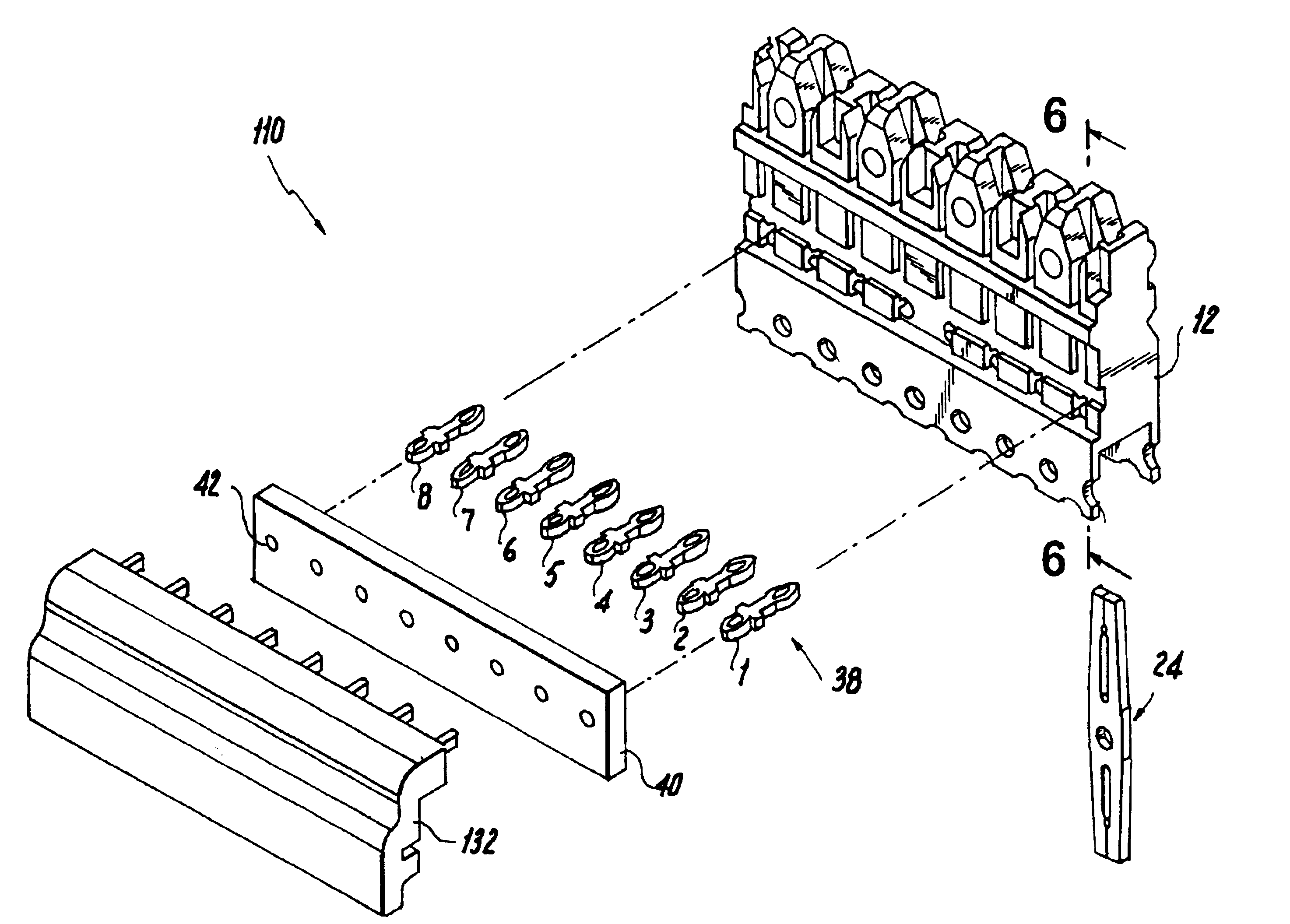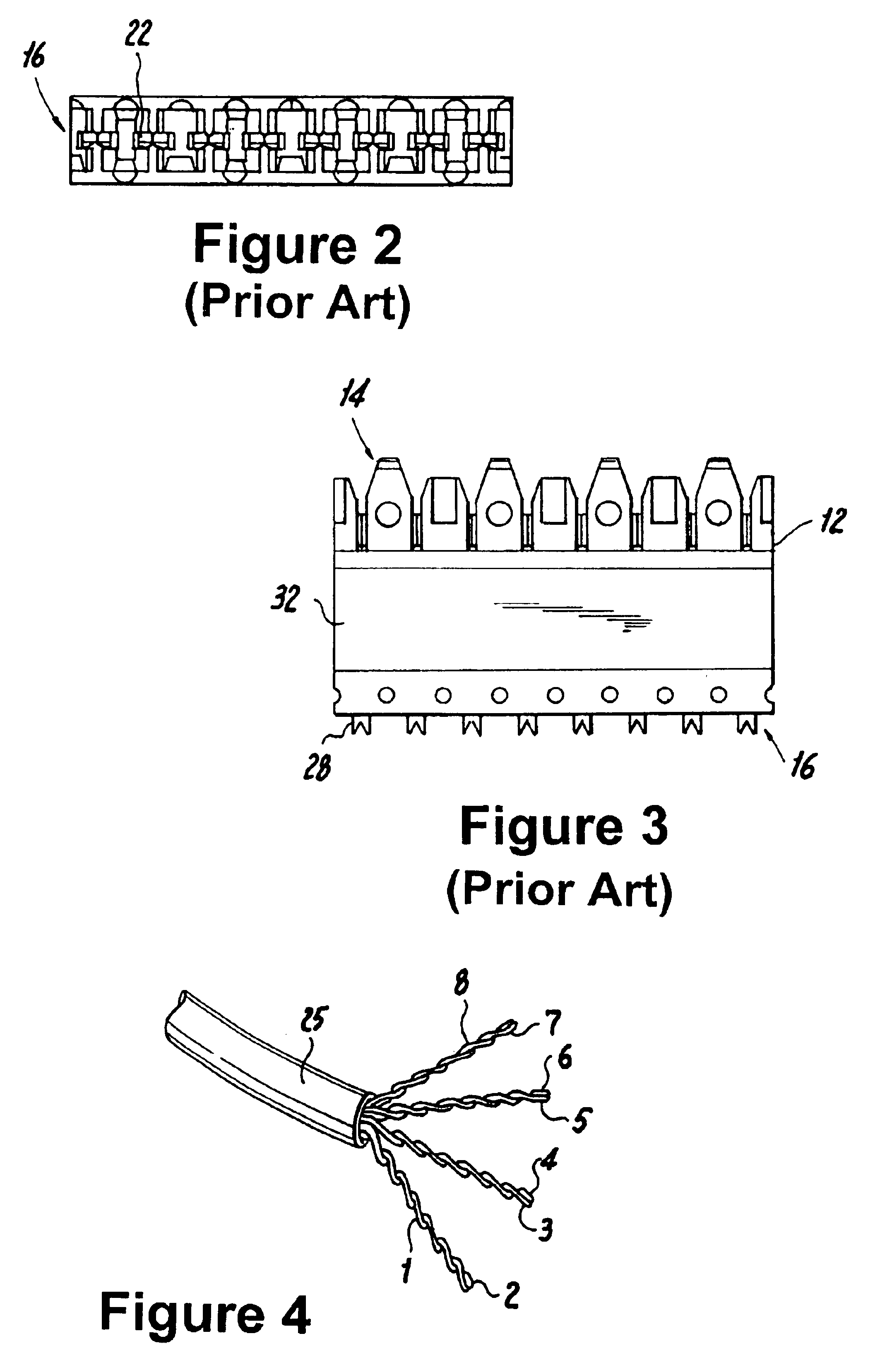Balance high density 110 IDC terminal block
a high density, terminal block technology, applied in the direction of coupling device connection, contact member penetrating/cutting insulation/cable strand, instruments, etc., can solve the problems of loss of intended signals, noise in connection with data transmission, and primary limiting factors of communication system performance, so as to reduce crosstalk and reduce noise , the effect of re-balancing the signal without negatively affecting the impedance characteristics of the wire pair
- Summary
- Abstract
- Description
- Claims
- Application Information
AI Technical Summary
Benefits of technology
Problems solved by technology
Method used
Image
Examples
Embodiment Construction
)
The following detailed description of preferred and / or exemplary embodiments of the present disclosure is intended to be read in the light of, or in context with, the preceding summary and background descriptions. Unless otherwise apparent, or stated, directional references, such as "up", "down", "left", "right", "front" and "rear", are intended to be relative to the orientation of a particular embodiment of the disclosure as shown in the first numbered view of that embodiment. Also, a given reference numeral should be understood to indicate the same or a similar structure when it appears in different figures.
Exemplary devices in accordance with the present disclosure are directed to reducing the harmful effects of electrical noise which naturally occurs in signals during passage through data transfer cables and connecting components. In particular, the present disclosure involves incorporating signal compensating devices into a new or existing component, such as the high density 1...
PUM
 Login to View More
Login to View More Abstract
Description
Claims
Application Information
 Login to View More
Login to View More - R&D
- Intellectual Property
- Life Sciences
- Materials
- Tech Scout
- Unparalleled Data Quality
- Higher Quality Content
- 60% Fewer Hallucinations
Browse by: Latest US Patents, China's latest patents, Technical Efficacy Thesaurus, Application Domain, Technology Topic, Popular Technical Reports.
© 2025 PatSnap. All rights reserved.Legal|Privacy policy|Modern Slavery Act Transparency Statement|Sitemap|About US| Contact US: help@patsnap.com



